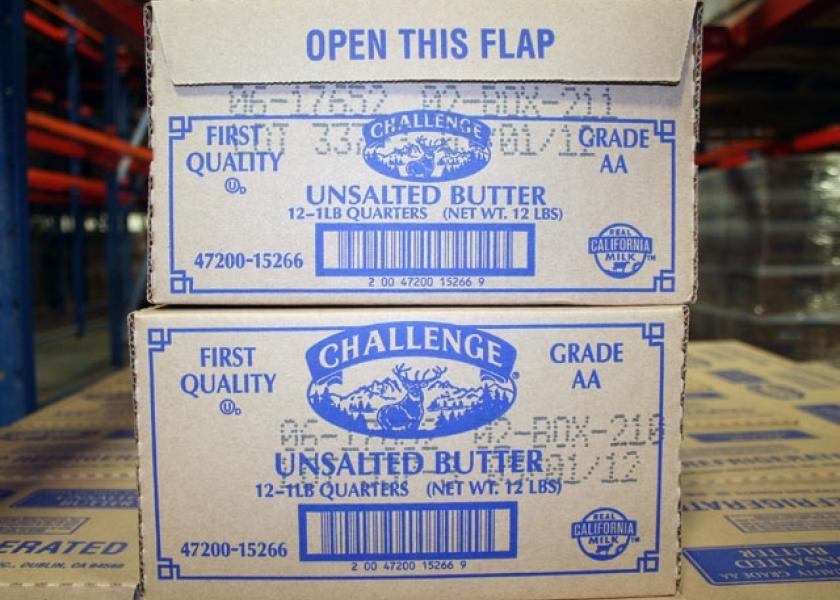Butterfat Is Gaining Popularity Among U.S. Consumers

U.S. consumers are increasingly turning to higher-fat milk as well as eating more butter. In fact, U.S. consumption of butterfat has reached levels not seen since World War II. Looking at shifts in fluid milk consumption, whole milk sales soared last year, according to USDA’s Estimated Fluid Milk Products Sales report.
“Overall, consumers bought less conventional and organic milk last year (down 1.3 percent and 1.4 percent, respectively, compared to 2014), but there were colossal shifts within the categories,” says Sara Dorland, analyst with the Daily Dairy Report and managing partner at Ceres Dairy Risk Management, Seattle.
For conventional milk, consumers purchased 11.2 percent more whole and flavored whole milk combined in 2015, compared with 2014 sales. Regular whole milk sales increased by 13.8 billion pounds, while flavored whole milk sales gained 0.6 billion pounds. By contrast, skim milk sales suffered a 10-percent decline to 5.263 billion pounds. Meanwhile, 1-percent milk sales grew 5.7 percent to 7.1 billion pounds, while sales of 2-percent fell 6.4 percent to 15.9 billion pounds.
Overall Milk Sales Dropped Slightly in 2015, Whole Milk Gained
Want more video news? Watch it on AgDay.
The trend was the same for organic milk, with whole milk sales rising 9.4 percent in 2015, compared to the prior year, and fat-free sales dropping 14.6 percent, according to the report. Flavored, reduced-fat organic milk suffered the greatest year-over-year losses, down 21 percent compared with the previous year.
“As is the case with butter, consumer perceptions of higher-fat dairy products, including milk, are more favorable than in past years as evidenced by stronger sales,” says Dorland. “Throughout 2015, there was speculation that stronger whole milk sales could have caused less cream to head to butter churns as butterfat stayed with the milk, and that appears to have happened.”
Daily Dairy Report analysts calculate that additional whole milk sales, at 3.25 percent butterfat, would have pulled the equivalent of 25 million pounds of butter from the system last year. “Although sales declines from other categories could have offset those losses completely, leaving the butterfat balance mostly unchanged,” Dorland notes.
While strong domestic demand continues to support U.S. butter prices, U.S. exporters of butter faced strong headwinds last year due to U.S. butter’s hefty premium in world markets. U.S. butter exports last year at an estimated 24,348 metric tons fell 66 percent from 2014 levels to the lowest level since 2006, according to UDSA.
U.S. butter exports are unlikely to increase much this year because the gap between U.S. and global prices is expected to remain large, says Mary Ledman, dairy economist with the Daily Dairy Report and president of Keough Ledman Associates Inc., Libertyville, Ill. However, butter prices could soften as more butter is traded on the CME spot market.
Until recently, butter traded on the CME spot butter market required a USDA grading certificate. In response to requests from the industry, however, the CME recently changed its trading rule to accept a Certificate of Analysis (COA) as an equivalent to a USDA grading certificate. This could make more butter eligible for sale on the U.S. spot market this year, says Ledman.







